Previously: Have You Seen Wrinkles?
For those who have spent the past decade hunting for Forrest Fenn’s treasure, nothing about it was a fairy tale; the 42-pound chest the elderly antiques and art dealer said he had hidden in the Rocky Mountains 10 years ago was a ticket to millions — to a real fortune that could make a real difference in real life.
They were the ones who, when asked what they’d do if they’d heard that someone had filled a chest with priceless artifacts and gold coins, hidden it somewhere, and challenged the public to find it, handing them a short poem as the key to the search, they didn’t brush the story off — they got to work. And in June of 2020, when it was announced that someone had finally found Forrest Fenn’s treasure, they knew that the mystery they had spent so long poring over was finally solved.
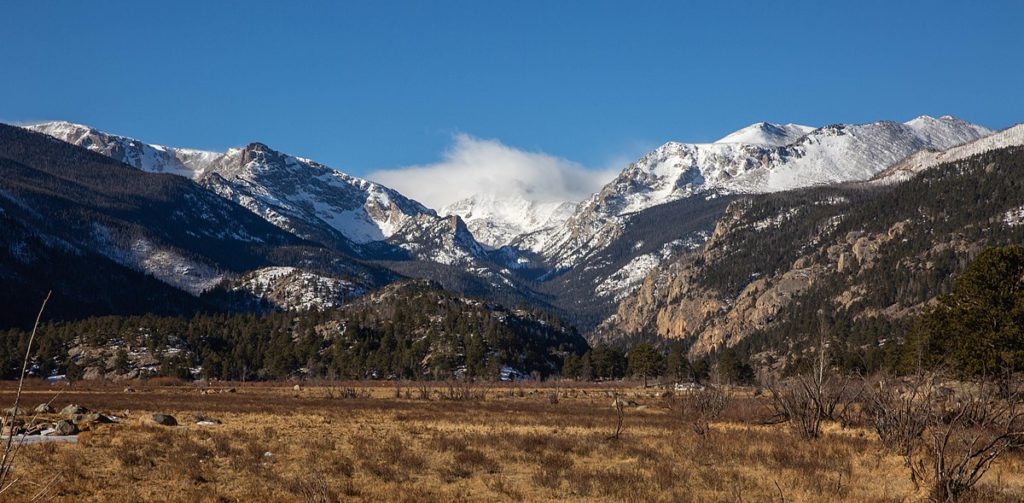
But the story of Forrest Fenn and his fantastic treasure might not be all that it seems.
There are a lot of questions about it, you see — questions that have never been satisfactorily answered, and, indeed, which may remain unanswered in perpetuity.
Which, perhaps, has always been the point.
[Like what you read? Check out Dangerous Games To Play In The Dark, available from Chronicle Books now!]
I mentioned the Fenn treasure briefly in our discussion of Adam Butcher’s short film “Internet Story” several years ago. “Internet Story” existed before the hullabaloo around Fenn’s treasure originally kicked up — production on the short film began in 2009, while Fenn wouldn’t hide his loot-filled chest until about a year later — but the context was worth examining; the fate of the protagonist of “Internet Story” may have been result of intentional ill will on the part of the antagonist, but part of what made the story feel so realistic was the fact that people actually have suffered harm and death looking for treasure in real life. The more devastating news stories associated with Fenn’s treasure over the years have proven that point multiple times.
But with news dropping that the treasure had allegedly been found in June of 2020, now seems like a good time to look a little more closely at the whole thing.
Because here’s the thing about the Fenn treasure:
Not everyone is convinced that it actually has been found.
Why?
Because not everyone is convinced that it actually existed in the first place.
The Legend Of Forrest Fenn’s Hidden Treasure
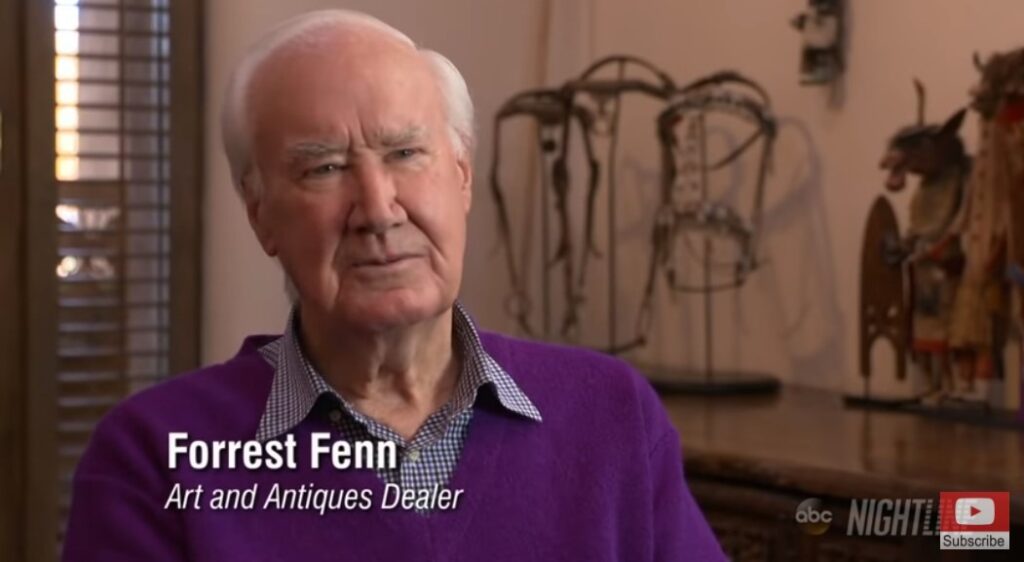
Forrest Burke Fenn was born on Aug. 22, 1930 in Temple, Texas. He wasn’t particularly academically inclined — something which he felt keenly (his father was the principal of his elementary school; said Fenn to The California Sunday Magazine in 2015, “I didn’t think I was very smart, but I didn’t have to be smart to figure out that my parents weren’t really proud of me”) — although he did graduate from high school. He entered the military in 1950, enrolling in the Air Force and, he has said, “hustling” his way into pilot training — which proved to be a turning point for him. He served until 1970, achieving the rank of Major and earning a Silver Star for actions he undertook in Vietnam.
After retiring from the military — Fenn has said that he opted to retire, rather than accept a promotion which would have put him behind a desk, according to The California Sunday Magazine — Fenn settled in Santa Fe, New Mexico with his family and got into the art business. Fenn had no background in art; as he told People Magazine in 1986, he “never studied art, didn’t own a painting, and didn’t know anybody who did.” But that had never stopped him in the past — he went on to say in that same People article, “It doesn’t matter who you are; it only matters who they think you are. It’s true in Hollywood, in politics, and it’s true with a painting” — and when he teamed up with Rex Arrowsmith, their resulting gallery, the Arrowsmith-Fenn Galleries, proved to be a massive success. After Arrowsmith retired, Fenn bought out the rest of the gallery, renaming it simply the Fenn Galleries.
Fenn sold a huge array of items, from paintings to artifacts found at native and indigenous archaeological sites in the United States. Many of the paintings were unabashed forgeries, about which he has been very upfront; additionally, many of the native and indigenous artifacts may have questionable origins. (In 2009, the FBI raided numerous collectors and dealers in the Four Corners area, arresting and charging 25 with looting ancient ruins in the Southwest and trafficking in artifacts stolen from these sites. Fenn was among those raided, but although the FBI did seize some items from him, no charges were ever brought against him, reported the Santa Fe New Mexican.) And he made bank doing it; these days, he’s often described in the press as a “millionaire.”
In 1988, though, devastating news hit: Fenn was diagnosed with kidney cancer. He had the kidney removed and underwent chemotherapy, but his prognosis was grim. That, he has said, is when he struck upon a somewhat radical idea: What if, in the time he had left, he filled a chest with the kinds of items and artifacts he’d made his fortune dealing in and hid it for future adventure-seekers to find? What if he made the chest’s resting spot his final resting spot, as well? What if he could keep his own memory alive through the thrill of the hunt that had so fascinated him in life?
So, he acquired a chest — antique, bronze, Romanesque, according to Vox — and began collecting items for it. As 2013 feature in Hemispheres Magazine reported, these items included “a jar full of gold dust panned in Alaska, gold coins, large and small gold nuggets, pre-Columbian gold animal figures, two ancient Chinese jade carvings, a 17th-century Spanish gold and emerald ring, and a beloved bracelet of turquoise beads, excavated from a Mesa Verde ruin in 1903, that Fenn had won in a game of pool”; the total sum of the loot was valued at about $3 million.
But Fenn didn’t end up hiding it then. His cancer went into remission, and for years, the chest sat in his home, untouched.
As he approached his 80th birthday, though — sometime in or around 2010 — he revived the idea of the hunt. He had sold the gallery years ago, around the time of his cancer diagnosis, but, well, once you hit 80, there are only so many years you might have left — so Fenn got to work. He accomplished several things at this time: He wrote and self-published his memoir, The Thrill Of The Chase; he dusted off the chest full of artifacts he had put together years before; and he drove out to the Rocky Mountains and hid the chest somewhere. Weighing a total of 42 pounds, it took him two trips from his car to do so. He told no one where he had stashed it — not even his family — but soon, word got out about the whole thing. National news coverage followed, and the race, as they say, was on.
The Thrill Of The Chase, it turned out, was key: In it, Fenn included a poem he had written which, he said, contained nine clues — clues to where the treasure was located, and how to find it. He refused to identify exactly where in the poem the clues were; however, he stated that the puzzle could be solved in its entirety using only this poem.
So, for 10 years, people searched. They tore apart the poem. They tore apart The Thrill Of The Chase. Some quit their jobs to free up time for the hunt. Some spent thousands on trips to the four states — Montana, Wyoming, Colorado, and New Mexico — Fenn said were the states in which “chasers,” as they became known, should look. Some lost their relationships or marriages in the process. Some lost their lives.
And throughout it all, Fenn largely kept his mouth shut, only occasionally dropping additional hints to help narrow the search.
It seemed, in fact, that the treasure might not ever be found — despite the fact that Fenn frequently reminded chasers that one of the biggest clues about where the chest might be revolves around the fact that he was 80 when he hid it, and therefore that it couldn’t be anywhere an 80-year-old man was unable to reach. That didn’t stop people from searching, of course, although with each passing year, it began to feel less and less likely that the loot would be located…
…Until June of 2020.
Because then, something extraordinary happened: Fenn sent word that someone had finally found his fabulous treasure.
On June 6, 2020, Fenn submitted a post to Dal Neitzel’s website focused on the treasure and the hunt. Fenn had been in contact with Neitzel for years; the website was one of the biggest community hubs around which chasers gathered, traded tips, and enjoyed each other’s company for nearly the entirety of the search. So, it wasn’t unusual that Fenn was in contact with Neitzel. What was unusual was the content of his message: “The treasure has been found,” Fenn wrote.
Neitzel published the post in its entirety. “It was under a canopy of stars in the lush, forested vegetation of the Rocky Mountains and had not moved from the spot where I hid it more than 10 years ago,” Fenn stated. “I do not know the person who found it, but the poem in my book led him to the precise spot.” He continued, “I congratulate the thousands of people who participated in the search and hope they will continue to be drawn by the promise of other discoveries.”
Fenn confirmed the news to the Santa Fe New Mexican shortly thereafter, stating in a piece published on June 7, “It’s true,” and that the chest had been found “a few days ago.” He reiterated that “the guy who found it does not want his name mentioned,” but did note that “he’s from back East.”
On June 16, a follow-up from Fenn appeared on Dal Neitzel’s site. He sent photos — one of the chest shortly after it had been found, and two of Fenn seated before the open chest, sorting through the contents. (The first photo was presumably furnished by the finder; I also assume the finder sat down with Fenn himself and the treasure at the time the second two photos were taken.) And then, on July 22, another update from Fenn revealed the state the treasure had been hidden in: Wyoming.
And so, as far as anyone knows, the treasure has been found.
But, like all things, there’s more to the story than just… well, the story. The tale of Forrest Fenn’s treasure lives up to its name in more ways than one; in fact, it’s a prime example of mythologization in action — of how the mystery and uncertainty surrounding a subject can make that subject into more than the sum of its parts.
And, perhaps, of how dangerous that kind of mythologizing can be.
The Cost Of The Hunt
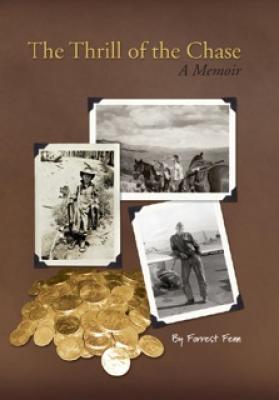
The Thrill Of The Chase.
Hypothetically, Fenn’s treasure could have been found by anyone, anywhere, without spending a dime on the search. After all, Fenn had made the poem containing the nine main clues available to read for free on his website, the Old Santa Fe Trading Co., at least as far back as 2011. But that’s not quite how things shook out — and, for the chasers of the treasure at least, it’s here that the myth-making starts: The myth of what the treasure hunt looks like, and the truth of what it actually is.
It wasn’t obvious from the get-go, but it turned out that there was a price of admission for the search. Although Fenn said that it was possible to solve the puzzle using only the nine clues in the poem, he also noted several times that The Thrill Of The Chase contains more helpful hints scattered throughout it, according to one Fenn treasure chaser website — so if you really wanted to give yourself a fighting chance, you’d need to acquire the book, too. And The Thrill Of The Chase is rather costly, especially for a volume only 147 pages long.
Its official retailer is the Collected Works Bookstore in Santa Fe, where the hardcover edition of the book is $35, plus at least another $13 in shipping if you’re not in a position to pick it up in person. Should you choose to go through Amazon, it’ll set you back anywhere from $75 to $90. In the past, Amazon prices have been as high as $368.86 (not including shipping), according to Taylor Clark writing for The California Sunday Magazine in 2016 — and that was the cheapest used copy available at the time. Meanwhile, used copies on Abe Books are currently priced between $98 and $167.
Fenn, it should be noted, hasn’t profited off the book’s sales; per The California Sunday Magazine, he donated the copies sold at Collected Works because he “didn’t want to be accused of using the treasure as a publicity stunt to enrich himself.” He also has nothing to do with the prices on Amazon, Abe Books, or other similar retailers, as they’re sold on those sites via third party sellers. Still, though — what this all means is that, unless you’re in a position where you’re able to drop that kind of money on the book, you’ll be working with substantially less than other, more privileged chasers might be.
But the price of the book is a drop in the bucket compared to what some Fenn chasers have spent over the years in their search to hunt down the treasure — which, in turn, underlines the fact that having access to certain resources wasn’t technically be required to participate in the hunt… but that they might well have been necessary if you were to have any hope of achieving success.
The New York Post (which, I mean, yes, is the Post, which is often prone to sensationalizing, so take it with a grain of salt and all that) published a report in the days following the announcement of the hunt’s conclusion detailing what a handful of chasers spent on hunting Fenn’s treasure: One said she had “spent tens of thousands of dollars on 20 trips to New Mexico”; meanwhile, another family said they spent “between $2,000 and $3,000 on each of their trips to the Rocky Mountains,” with the number of trips clocking in at three (a fourth originally planned for April was cancelled due to current circumstances).
CNN Money also spoke to chasers who had tallied up what they had spent so far back in 2019, when the search was still ongoing: One put the figure at $10,000 in just a single year; meanwhile, another, who is usually based in the UK, combined a trip to hunt for the Fenn treasure with a family vacation one year, with the “Fenn stop,” as CNN Money put it, costing $5,800 on its own. One New Mexico-based local did tell CNN Money that her proximity to the treasure’s potential location meant that her “boots-on-the-ground” trips only cost around $50 apiece — but she also said she’d done more than 300 such trips, putting the total cost at the time at around $15,000.
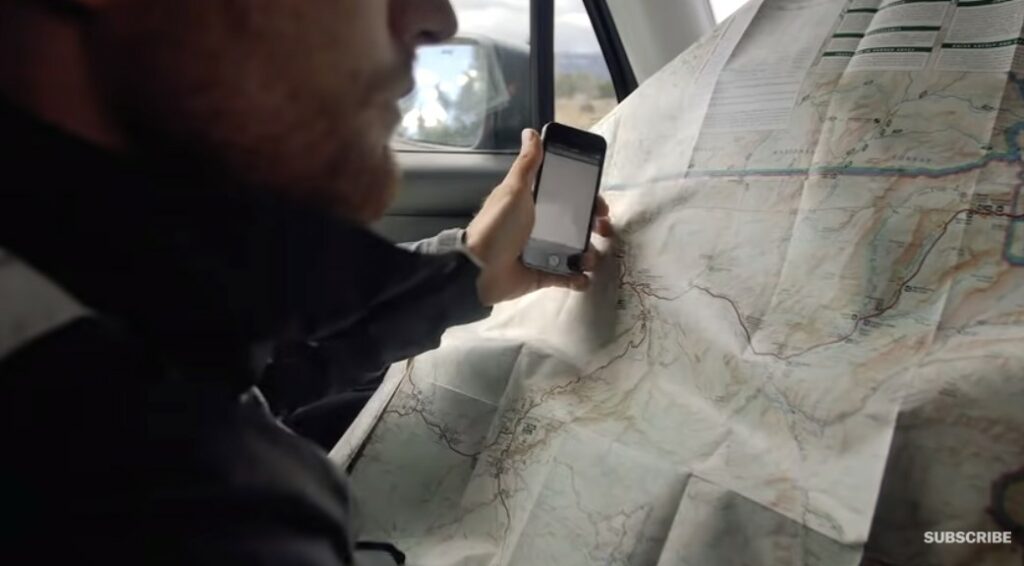
Of course, just because none of these searchers found the treasures means that the money spent on it was wasted; as the CNN Money piece points out, the average American spends a little over $3,000 per year on entertainment-related expenses, so if your hobby is hunting the Fenn treasure and you spend around $15,000 over five years looking for it, that’s “statistically pretty average” when it comes to entertainment-related expenses. Furthermore, one chaser also noted that “the benefits outweigh the costs” for her; she said that she’d learned a ton, including how to identify certain animals by their scat, how to navigate when you don’t have a compass, how to hike for extended periods at high elevation, and a whole host of other outdoor survival skills as she searched.
However, what all this brings to light is the same point made by the price of The Thrill Of The Chase, just on a much larger scale: Unless you had the resources available to you that it made it possible to take on these expenses — or unless you were willing to make some pretty major sacrifices to access those resources — you’d be working at a disadvantage. The playing field for chasers wasn’t — and, perhaps, never had been — even.
And yet, money wasn’t the only cost for participating in the hunt. There was also a human cost. Anecdotally, you’ll hear about chasers for whom the hunt cost them their jobs, or their marriages, or both — and, more concretely, you’ll hear about the chasers who lost their lives while searching for Fenn’s treasure.
Back in 2018, when I was looking at the Fenn treasure in relation to “Internet Story,” four people had died looking for the chest: Randy Bilyeu, whose remains were found by the Rio Grande in 2016; Jeff Murphy, who died in 2017 after falling 500 feet in Yellowstone National Park; Paris Wallace, whose remains were found near the Taos Junction Bridge in New Mexico in 2017; and Eric Ashby, whose remains were found in 2017 a month after he fell off a raft in the Arkansas River. The remains of Murphy, Wallace, and Ashby were all found in June of the same year. A fifth fatality occurred in 2020: Michael Wayne Sexson and an unnamed companion became trapped in the snow near Dinosaur National Monument in March. By the time a rescue team managed to locate them, Sexson had died. His companion recovered in the hospital.
The key thing to note about all of this — the price of admission, the resources that are necessary to participate fully, the human cost of the hunt — is that none of it is apparent on the surface of the story.
The way the story of the treasure and the hunt is traditionally presented sounds almost like a modern-day Horatio Alger story: If you just pull yourself up by your bootstraps and show a little gumption, you, too, have a chance at finding wealth beyond your wildest dreams. But that’s not really the case; some people will be better positioned than others to hunt, and will be more poised for success — not necessarily because they’re smarter, or better chasers, or anything like that, but purely because they’re privileged in a way or ways that not everyone is.
For some, though, that didn’t seem to matter.
The story was what mattered
And the ability to place yourself as the protagonist of the story was what makes the hunt worth it.
Myth-Making And The Self
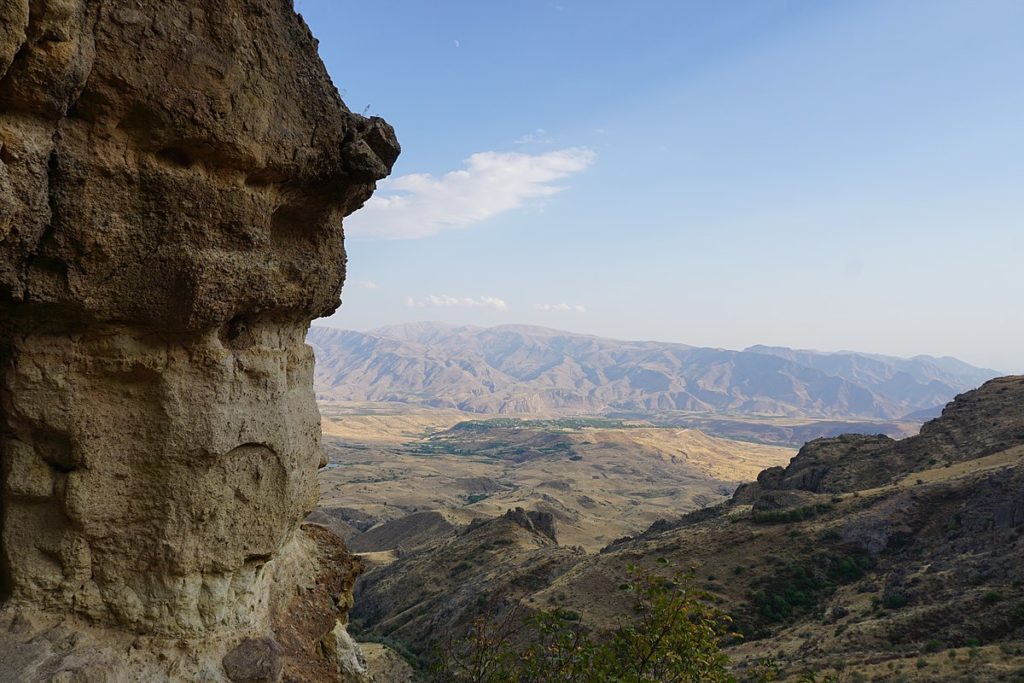
There’s another layer to the mythologizing of Forrest Fenn and his treasure, too, though — one that, shall we set, sets my spider sense a-tingling.
You see, very little about Fenn’s treasure has been independently verified. At the end of the day, all we really have to go on is what Fenn himself has said about it — and that’s an awfully big thing to take at just one person’s word, no matter how fine a reputation that person might have.
Almost everything we know about the treasure — its worth, the kinds of items comprising it, the fact that he hid it, the fact that it was found — came directly from Fenn. And the only other person who can confirm any of it is the person who is said to have found the treasure — who has also, somewhat conveniently, chosen to remain anonymous. As treasure hunter Seth Wallack put it to the Santa Fe New Mexican at the time of the treasure’s alleged finding, “[Fenn] said the treasure was found, but doesn’t reveal any details so his narrative can’t be questioned.” And that’s… a little troubling.
It’s no wonder that not everyone is convinced the treasure has been found. It’s no wonder that no everyone is convinced that the treasure ever existed at all. And although I’m not necessarily saying that that the whole thing is false, or a hoax, or completely made up, the truth of the matter it’s entirely possible that it could be.
Something that complicates the narrative is that there are inconsistencies in Fenn’s story — specifically in the backstory explaining the treasure itself and the purpose of the hunt. According to the 2013 feature in Hemispheres Magazine, for example, Fenn got the idea to put together the treasure in 1996, after designer Ralph Lauren — who is apparently one of Fenn’s friends — visited him while he was in treatment for the cancer plaguing his kidneys. In a different feature published in The California Sunday Magazine in 2015, however, Fenn said that he began approaching writers to help him pen the book that would hold the clues in 1988 — much earlier than the date given in the Hemispheres piece, and not too long after his initial diagnosis.
The 2015 account may be closer to the truth. It’s verified in a way that the 2013 account is not: It includes a comment from author Douglas Preston, who is both a friend of Fenn’s (like Ralph Lauren, it seems) and one of the first writers he approached about The Thrill Of The Chase. Said Preston:
“Forest told me the idea at lunch one day. His plan was to inter himself with the treasure, so that anyone who found it could essentially rob his grave. I said, ‘God, Forrest, that’s a terrific story — you’re the guy who’s going to take it with you!”
In the grand scheme of things, this particular inconsistency doesn’t really matter a great deal; it doesn’t have a measurable effect on the trajectory of the narrative overall. But it does, I think, speak to the mythologizing not only of the alleged treasure, but of Fenn himself. His story of who he is, why he does the things he does, and how he got to where he is now shifts pretty radically from time to time — or perhaps more accurately, the story of himself that he presents to the public shifts pretty radically.
Fenn’s own changing narrative isn’t a new development, either. I keep coming back to that profile on Fenn as the owner of Fenn Galleries published in People Magazine in 1986 — decades before any hint of a treasure hunt was on the horizon. Even then, much of his history was positioned as what Fenn said about himself, rather than as anything that had been proven or confirmed. For example (emphasis mine): “But the pilot, who says he survived 328 combat missions in Vietnam, is adept at landing on his feet.”
Again, I’m not saying that that’s necessarily a lie; it’s possible that those involved in the profile’s creation simply weren’t able to access to records that confirmed the figure, and subsequently chose to hedge their bets by giving it a “who says he survived” instead of simply a “who survived.” (Reports on the treasure published much later discussing Fenn’s record also present the 328 missions as confirmed, rather than as something Fenn has said about himself.) The syntax here is interesting all the same, though.
And besides, it’s what comes next that resonates with me the most: “It doesn’t matter who you are,” Fenn said to People at the time. “It only matters who they think you are.”
This is perhaps the one thing that Fenn has been recorded as saying, during all of the years he’s been in the public eye, that rings completely and utterly true to me. It sounds like a life philosophy — and, perhaps, as a sort of guiding principal which both the story of the treasure and the story Fenn himself has followed all this time, whether intentionally or not.
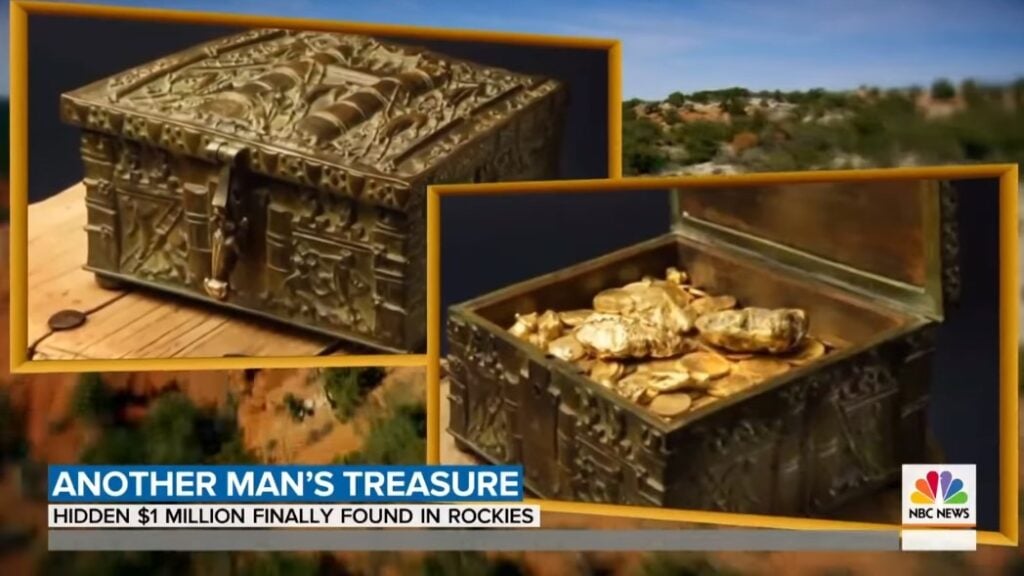
Of course, nothing about this story fits into a neat little box. For example, whether or not Fenn actually hid the chest full of treasure, it does seem to have existed at one point or another: As Dal Neitzel noted in 2016, it’s known to have been seen by a number of people prior to when Fenn is meant to have hidden it, when he was simply keeping it in his home. Some of this information comes down again to trusting Fenn’s word — per Neitzel (emphasis mine), “Forrest says that over 100 people saw that chest when it was in his vault” — but some of it has apparently been at least somewhat verified. Wrote Neitzel:
“I have personally met at least 10 people who saw the chest in Forrest’s vault before it was hidden. One of them is a close friend who also hefted the chest and agrees that it weighed around 40lbs. My friend tells me that the chest in Forrest’s vault was the same chest that is in the photos. He saw it several times and it usually had different items in it each time he saw it. One day when he visited Forrest it was no longer there.”
There are still a few mental hoops we need to jump through here; those of us who are not Dal Neitzel are still dealing with someone telling us that someone has told them that they’ve seen the treasure — not accounts we’re hearing first-hand ourselves. But, like the quote from Douglas Preston about The Thrill Of The Chase in the 2015 California Sunday Magazine about Fenn, there’s enough here to suggest that there’s at least some truth to the matter.
Furthermore, Outside Online observed shortly after the announcement that the hunt had ended that there’s an actual case to be made for why the finder (assuming he exists) might wish to remain anonymous — and why neither the finder nor Fenn might be keen to reveal the location where the treasure allegedly lay hidden all this time. Quoting treasure hunter W.C. Jameson’s memoir Treasure Hunter: A Memoir Of Caches, Curses, And Confrontations, Outside noted, “‘Announcing a discovery often leads to negative and unwanted developments, primarily the loss of any treasure that may have been found.’ In other words, finders are not keepers if they make a big fuss about it.”
Outside went on to explain that “the problem with telling everyone about the location of Fenn’s treasure is that there’s a good chance it doesn’t legally belong to the person who found it.” It apparently “varies by state,” although “in general, treasure found on private property belongs to the land owner, not the finder. Negotiating “the split of any findings ahead of time” is the only way to avoid any legal headaches surrounding the hiding and subsequent finding of a treasure, per Outside. If Fenn didn’t plan for these circumstances — or any of a number of other issues that might affect the legality of the whole situation — then that’s good incentive to keep any and all information pertaining the treasure, its location, and its finder under wraps.
Even now, there are people on both sides of the aisle: Those who think without a doubt that the treasure was a hoax, and those who are equally convinced that it was real.
Randy Bilyeu’s widow, Linda, firmly believes it was a hoax; she told Westword after the hunt concluded, “I believe he never hid the treasure. He needed attention and this is how he got it. Fenn needed more attention, which is why he said the treasure has been found with ‘no proof.’” So do a number of Redditors at the r/FindingFennsGold subreddit; as one user put it, “How do you know this photo [of Fenn with the “found” treasure] is recent? How do you know that Forrest didn’t go get the treasure and take a photo of him going through it?” (Answer: We don’t.)
But others still swear it was real, that they believe they themselves were close to finding it, that they did solve the puzzle but had the glory stolen out from underneath them.
Either way, we’ll probably never know the real truth — not unless someone is able to independently verify what Fenn has been saying for all these years, or unless the finder comes forward with satisfactory evidence of his own. Whether Fenn’s treasure existed or not; whether it was hidden or not; whether it was found or not; the story — the legend — is all we have to go on.
And that, likely, is the way it will stay.
***
There is, of course, much, much more to be written about Fenn’s treasure outside the scope of what I’ve put down here. I haven’t gotten into the ethics of treasure hunting, for example; personally, I have a lot of questions about the contents of the chest, assuming it exists — namely about how the items were sourced. Even if Fenn himself acquired them by honest means, “treasure hunting” has historically involved (usually white) people straight-up stealing objects and artifacts from other people (usually people of color) and cultures; that’s how a lot of items have made it out of their original environments and onto the antiques market over the course of human history. It’s therefore possible — even, I would argue, likely — that at least some of the objects in Fenn’s chest were, at some point, stolen in this manner. I don’t know about you, but I wouldn’t feel fantastic about “owning” a bunch of significant items that shouldn’t ever have been mine to “own” in the first place.
But then again, maybe that’s the real story here — the story of each of the objects in the chest, whether or not it was ever truly hidden or whether or not it was ever truly found.
Maybe those are the stories we should be telling: Where they came from. How they wound up in the chest.
And, most importantly, the story of the people to whom they belonged in the first place.
[Photos via NPS National Resources, Ավետիսյան91/Wikimedia Commons, available via the public domain and a CC BY-SA 4.0 Creative Commons license; ABC News, Vox, TODAY/YouTube.]